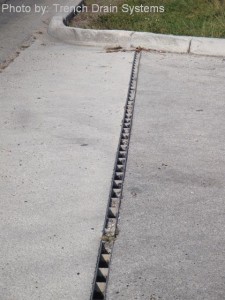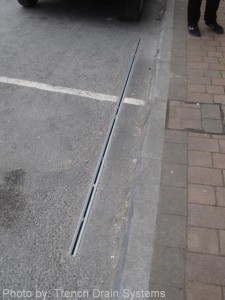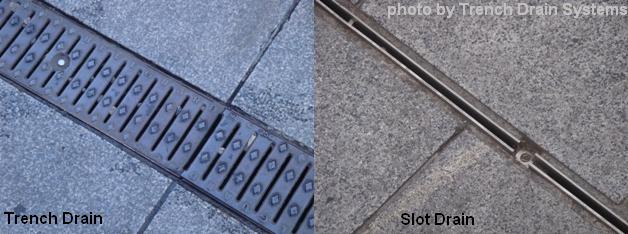 Slot drains are a growing segment of the drainage market, but they haven’t broken into popular use – in America at least.
Slot drains are a growing segment of the drainage market, but they haven’t broken into popular use – in America at least.
Compared to trench drain systems, little is known about this type of drainage system.
There are a few slot drain systems in the American market. More likely, trench drain manufacturers offer accessories that adapt trench drains to function as slot drains. Others sell trench drain systems shaped similar to slot drains but with a wider throat, which are close but no cigar. Since I’ve been researching the new phenomenon of slot drains, I thought I’d take a minute to talk about what sets slot drains apart from trench drains.
Slot drains are different from trench drain systems in several key ways. For starters, the surface area on a slot drain is deceptively narrow. Trench drains are essentially troughs covered by a grate that rests on a lip below ground level. Slot drains, by comparison, have narrow throats that widen below the surface to accommodate water flow; they do not use grates.
So, if the open surface area on a slot drain is so small, how effective are they? You’d be surprised. It’s a common misconception that flow rates are determined by open surface area alone. Other factors, such as drain material and surface material, play an important role, too.
In instances of sheet flow, slot drains can perform better than trench drains. The long, relatively uninterrupted drain opening (slot) gobbles up water as it rushes to the slot drain. In comparison, trench grates have wide rib components that can create a bridge for water to flow across during sheet flow. Typical trench drain grates have less than 40 percent open area. On the other hand, slot drains approach 100 percent open area. Water doesn’t cross open air.
 Trench drains have to use catch basins every 150’ or so because water begins to overtake the drain’s water capacity. Water flows into a drain along the entire line, not just at the beginning. That’s why longer runs use catch basins: they basically have to restart the run so the drain isn’t overwhelmed.
Trench drains have to use catch basins every 150’ or so because water begins to overtake the drain’s water capacity. Water flows into a drain along the entire line, not just at the beginning. That’s why longer runs use catch basins: they basically have to restart the run so the drain isn’t overwhelmed.
Because of their design, slot drains have to be much simpler than trench drains. They have fewer components, and the accessories they do offer are “hassle-free,” which makes for easy and quick installations. In contrast, trench drains will take longer to assemble prior to installation. An average trench drain system will have grate lockdown devices, screws and an installation chair or coupler for channel joints.
Slot drains have no decorative option because they are designed not to be noticed. Think of it as minimalism. For all the benefits of using slot drain, it is difficult to wrap my mind around giving up decorative grates. I like the look of a decorative pattern, how it seems to liven up a boring stretch of concrete. The narrow strip running down a sidewalk or roadway is hardly more eye-catching than a concrete joint cut.
Slot drain systems vs. trench drain systems… which do you prefer? Let me know by leaving a comment below!
If you have a question about trench drain grates or slot drains, email us at [email protected] or call one of our drain specialists at 610-638-1221 to discuss your application. Information on the drain systems mentioned above can be found at www.TrenchDrainSystems.com.


